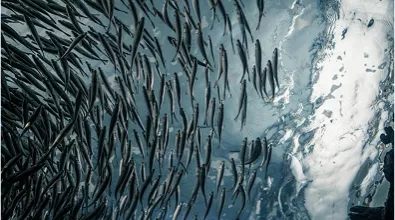
Biodiversity
Our nature is to be diverse
The loss of biodiversity and the collapse of ecosystems are among the main threats that humanity will face in the next decade.
We take responsibility
We are aware that the current economic growth model is one of the main causes for the accelerated loss of biodiversity that has been observed. More than recognizing our role in changing this, we assume our responsibility. We are working towards a Nature Positive impact.
Our commitment: Net Gain by 2030
We are committed to contribute to reducing the loss of biodiversity by promoting the mitigation hierarchy, and in the long-term aiming for a net gain in terms of biodiversity. To achieve this, we embrace our responsibility to assess our dependencies, impacts and to protect the species potentially affected due to our activities.
The principles of the mitigation hierarchy are applied along the whole lifecycle of the projects through actions and initiatives seeking to avoid, minimize, restore, compensate and offset impacts. The implementation strategy is based on the adoption of the AMAT methodology, inspired by SBTN's Step-by-Step Guide to Nature based target setting.
Following the mitigation hierarchy, EDP:
- Avoids: Identifies situations where it is possible to avoid impacts, already in the early design phase, through a careful selection of the place or time in which to establish infrastructure which is supported by environmental impact assessment studies conducted by external experts.
- Minimises: After a baseline survey of the state of local Biodiversity, measures are taken to reduce the duration, intensity and/or extent of risks or impacts that cannot be completely avoided.
- Restores/rehabilitates: After the construction and dismantling phases, EDP restores and rehabilitates the affected ecosystems, namely by bringing construction sites, temporary accesses, etc., back to their natural state.
- Compensates: when the previous phases have not proven sufficient to negate the project’s impact on local biodiversity, measures are taken to make up for the loss of significant adverse residual impacts, in the pursuit of net gains for biodiversity.
We identify and assess the nature-related impacts and dependencies in our direct operations
EDP has established a structured approach to biodiversity risk management, embedded within its corporate Environmental Management System. This process is based on a comprehensive assessment of both internal and external factors, enabling the identification of key biodiversity risks and opportunities.
Risk screenings are conducted using internationally recognized datasets such as the World Database of Key Biodiversity Areas (KBA), the World Database on Protected Areas (WDPA), and the IUCN Red List of Threatened Species, ensuring informed decision-making.

TNFD early adopter
We will promote ecosystems regeneration, leveraging land use synergies and nature-based solutions to better address biodiversity protection and a nature positive impact.
Some of our projects and collaborations

Space4Nature to promote Nature
Following our commitment to the wellfair of communities and environment, we take action on action on one of our most precious natural resources: water.
Content card grid
Therefore, protecting the planet by contributing to its regeneration and a positive nature in 2030 shapes EDP's ambition in its relationship with nature and the importance of its preservation. Learn about the work carried out by EDP and the performance of our commitments in the area.





